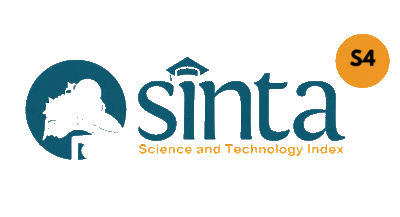Pendampingan Pengembangan Sumber Daya Manusia dan Model Bisnis Social Enterprise Lingkar Organik
DOI:
https://doi.org/10.24002/jai.v2i5.5873Keywords:
Social Enterprise, Career Development, Lingkar OrganikAbstract
Social enterprise is a typical organization in the social economy. Social enterprise has two purposes: meeting the principle of profit maximization and addressing social and environmental purposes, which includes reinvesting in the community. These two purposes are aimed to be fulfilled simultaneously, as social enterprises seek to balance activities that provide economic benefits with social goals. Lingkar Organik is a social company located in Yogyakarta that continues to grow and develop. To develop a business entity, growth in organizational performance is needed, both in terms of financial performance and service quality. Employees in social companies come from various cultural backgrounds, education, social conditions, and generational gaps become a significant challenge in managing human resources to explore their talents. Another challenge is the lack of understanding of the social vision and objectives that are the main foundation. Therefore, it is important to have employee development and internal branding for Lingkar Organik.
References
Guo Chau and Bielefeld Wolfgang, Social Entrepreneurship: An Evidence-Based Approach to Creating Social Value. Jossey-Bass: John Wiley & Sons, Inc, 2014.
Kim Donghyun and Lim Up, “Social Enterprise as a Catalyst for Sustainable Local and Regional Development,” Sustainability, vol. 9, no. 8, p. 1427, Aug. 2017, doi: 10.3390/su9081427.
A. Barone, “Social Enterprise,” Investopedia, 2020. https://www.investopedia.com/terms/s/social-enterprise.asp (accessed Apr. 16, 2021).
Robbins. S. P and Judge. T. A, Organizational Behavior, 17th Editi. Global Edition: Pearson International Content, 2016.
UNESCO, “Human Resource Development,” 2021. https://unevoc.unesco.org (accessed Apr. 16, 2021).
J. Yarnall, “Maximising the effectiveness of talent pools: a review of case study literature,” Leadersh. Organ. Dev. J., vol. 32, no. 5, pp. 510–526, Jul. 2011, doi: 10.1108/01437731111146596.
Lingkar Organik, “Mengapa Organik,” 2021. http://www.lingkarorganik.or.id (accessed Apr. 16, 2021).
E. C. K and Amundsen. S, “The relationship between leadership styles and employee-driven innovation: the mediating role of leader–member exchange,” Evidence-based HRM a Glob. Forum Empir. Scholarsh., vol. 9, no. 1, pp. 63–77, Feb. 2021, doi: 10.1108/EBHRM-10-2019-0091.
C. L. Bovee and J. V. Thil, Business Communication Today, 15th Editi. Pearson, Global Edition, 2021.
Y. Zaguri, “5 Steps to Create a Successful Onboarding Process,” Kryon Systems, 2016. https://www.kryonsystems.com/ (accessed Oct. 19, 2021).
Downloads
Published
Issue
Section
License

This work is licensed under a Creative Commons Attribution-ShareAlike 4.0 International License.










